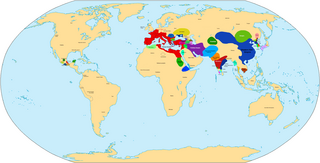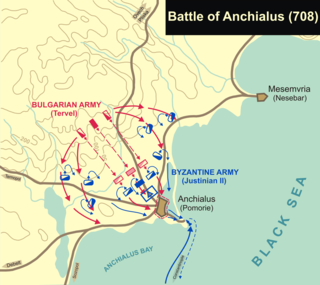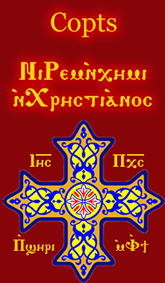Deaths
| | This section is empty.You can help by adding to it.(January 2014) |
| Millennium: | 1st millennium BC |
|---|---|
| Centuries: | |
| Decades: | |
| Years: |
| 708 BC by topic |
| Politics |
|---|
| Categories |
| Gregorian calendar | 708 BC DCCVII BC |
| Ab urbe condita | 46 |
| Ancient Egypt era | XXV dynasty, 45 |
| - Pharaoh | Shabaka, 14 |
| Ancient Greek era | 18th Olympiad (victor )¹ |
| Assyrian calendar | 4043 |
| Balinese saka calendar | N/A |
| Bengali calendar | −1300 |
| Berber calendar | 243 |
| Buddhist calendar | −163 |
| Burmese calendar | −1345 |
| Byzantine calendar | 4801–4802 |
| Chinese calendar | 壬申年 (Water Monkey) 1989 or 1929 — to — 癸酉年 (Water Rooster) 1990 or 1930 |
| Coptic calendar | −991 – −990 |
| Discordian calendar | 459 |
| Ethiopian calendar | −715 – −714 |
| Hebrew calendar | 3053–3054 |
| Hindu calendars | |
| - Vikram Samvat | −651 – −650 |
| - Shaka Samvat | N/A |
| - Kali Yuga | 2393–2394 |
| Holocene calendar | 9293 |
| Iranian calendar | 1329 BP – 1328 BP |
| Islamic calendar | 1370 BH – 1369 BH |
| Javanese calendar | N/A |
| Julian calendar | N/A |
| Korean calendar | 1626 |
| Minguo calendar | 2619 before ROC 民前2619年 |
| Nanakshahi calendar | −2175 |
| Thai solar calendar | −165 – −164 |
| Tibetan calendar | 阳水猴年 (male Water-Monkey) −581 or −962 or −1734 — to — 阴水鸡年 (female Water-Rooster) −580 or −961 or −1733 |
The year 708 BC was a year of the pre-Julian Roman calendar. In the Roman Empire, it was known as year 46 Ab urbe condita . The denomination 708 BC for this year has been used since the early medieval period, when the Anno Domini calendar era became the prevalent method in Europe for naming years.
| | This section is empty.You can help by adding to it.(January 2014) |
The Julian calendar, proposed by Julius Caesar in AUC 708, was a reform of the Roman calendar. It took effect on 1 January AUC 709 , by edict. It was designed with the aid of Greek mathematicians and astronomers such as Sosigenes of Alexandria.
A leap year is a calendar year that contains an additional day added to keep the calendar year synchronized with the astronomical year or seasonal year. Because astronomical events and seasons do not repeat in a whole number of days, calendars that have the same number of days in each year drift over time with respect to the event that the year is supposed to track. By inserting an additional day or month into the year, the drift can be corrected. A year that is not a leap year is a common year.

New Year is the time or day at which a new calendar year begins and the calendar's year count increments by one. Many cultures celebrate the event in some manner. In the Gregorian calendar, the most widely used calendar system today, New Year occurs on January 1. This was also the first day of the year in the original Julian calendar and the Roman calendar.

The Roman calendar was the calendar used by the Roman kingdom and republic. The term often includes the Julian calendar established by the reforms of the dictator Julius Caesar and emperor Augustus in the late 1st century BC and sometimes includes any system dated by inclusive counting towards months' kalends, nones, and ides in the Roman manner. The term usually excludes the Alexandrian calendar of Roman Egypt, which continued the unique months of that land's former calendar; the Byzantine calendar of the later Roman Empire, which usually dated the Roman months in the simple count of the ancient Greek calendars; and the Gregorian calendar, which refined the Julian system to bring it into still closer alignment with the tropical year.
Year 12 BC was either a common year starting on Saturday, Sunday or Monday or a leap year starting on Sunday of the Julian calendar and a common year starting on Friday of the Proleptic Julian calendar. At the time, it was known as the Year of the Consulship of Messalla and Quirinius. The denomination 12 BC for this year has been used since the early medieval period, when the Anno Domini calendar era became the prevalent method in Europe for naming years.

AD 1 (I), 1 AD or 1 CE is the epoch year for the Anno Domini calendar era. It was the first year of the Common Era (CE), of the 1st millennium and of the 1st century. It was a common year starting on Saturday or Sunday, a common year starting on Saturday by the proleptic Julian calendar, and a common year starting on Monday by the proleptic Gregorian calendar. In its time, year 1 was known as the Year of the Consulship of Caesar and Paullus, named after Roman consuls Gaius Caesar and Lucius Aemilius Paullus, and less frequently, as year 754 AUC within the Roman Empire. The denomination "AD 1" for this year has been in consistent use since the mid-medieval period when the anno Domini (AD) calendar era became the prevalent method in Europe for naming years. It was the beginning of the Christian/Common era. The preceding year is 1 BC; there is no year 0 in this numbering scheme. The Anno Domini dating system was devised in AD 525 by Dionysius Exiguus.

Year 708 (DCCVIII) was a leap year starting on Sunday of the Julian calendar. The denomination 708 for this year has been used since the early medieval period, when the Anno Domini calendar era became the prevalent method in Europe for naming years.
The proleptic Julian calendar is produced by extending the Julian calendar backwards to dates preceding AD 8 when the quadrennial leap year stabilized. The leap years that were actually observed between the implementation of the Julian calendar in 45 BC and AD 8 were erratic: see the Julian calendar article for details.
In chronology and periodization, an epoch or reference epoch is an instant in time chosen as the origin of a particular calendar era. The "epoch" serves as a reference point from which time is measured.
Year 8 BC was either a common year starting on Friday or Saturday or a leap year starting on Thursday of the Julian calendar and a common year starting on Wednesday of the Proleptic Julian calendar. At the time, it was known as the Year of the Consulship of Censorinus and Gaius Asinius. The denomination 8 BC for this year has been used since the early medieval period, when the Anno Domini calendar era became the prevalent method in Europe for naming years.
Year 46 BC was the last year of the pre-Julian Roman calendar. At the time, it was known as the Year of the Consulship of Caesar and Lepidus. The denomination 46 BC for this year has been used since the early medieval period, when the Anno Domini calendar era became the prevalent method in Europe for naming years.
Year 45 BC was either a common year starting on Thursday, Friday or Saturday or a leap year starting on Friday or Saturday and the first year of the Julian calendar and a leap year starting on Friday of the Proleptic Julian calendar. At the time, it was known as the Year of the Consulship of Caesar without Colleague. The denomination 45 BC for this year has been used since the early medieval period, when the Anno Domini calendar era became the prevalent method in Europe for naming years.

The Coptic calendar, also called the Alexandrian calendar, is a liturgical calendar used by the Coptic Orthodox Church and also used by the farming populace in Egypt. This calendar is based on the ancient Egyptian calendar. To avoid the calendar creep of the latter, a reform of the ancient Egyptian calendar was introduced at the time of Ptolemy III which consisted of the intercalation of a sixth epagomenal day every fourth year. However, this reform was opposed by the Egyptian priests, and the reform was not adopted until 25 BC, when the Roman Emperor Augustus imposed the Decree upon Egypt as its official calendar. To distinguish it from the Ancient Egyptian calendar, which remained in use by some astronomers until medieval times, this reformed calendar is known as the Coptic or Alexandrian calendar. Its years and months coincide with those of the Ethiopian calendar but have different numbers and names.

New Year's Day, also simply called New Year or New Year's, is observed on 1 January, the first day of the year on the modern Gregorian calendar as well as the Julian calendar. Whilst most solar calendars begin the year regularly at or near the northern winter solstice, the start of the new year in cultures that observe a lunisolar or lunar calendar happen at less fixed points relative to the solar year.
The history of calendars, that is, of people creating and using methods for keeping track of days and larger divisions of time, covers a practice with ancient roots.
A calendar era is the period of time elapsed since one epoch of a calendar and, if it exists, before the next one. For example, the Gregorian calendar numbers its years in the Western Christian era.
The Ancient Macedonian calendar is a lunisolar calendar that was in use in ancient Macedon in the 1st millennium BC. It consisted of 12 synodic lunar months, which needed intercalary months to stay in step with the seasons. By the time the calendar was being used across the Hellenistic world, seven total embolimoi were being added in each 19-year Metonic cycle. The names of the ancient Macedonian Calendar remained in use in Syria even into the Christian era.
The year zero does not exist in the Anno Domini (AD) system commonly used to number years in the Gregorian calendar and in its predecessor, the Julian calendar. In this system, the year 1 BC is followed by AD 1. However, there is a year zero in astronomical year numbering and in ISO 8601:2004, as well as in most Buddhist and Hindu calendars.
Julian may refer to:
The Gregorian calendar is the calendar used in most of the world. It was introduced in October 1582 by Pope Gregory XIII as a minor modification of the Julian calendar, reducing the average year from 365.25 days to 365.2425 days, and adjusting for the drift in the 'tropical' or 'solar' year that the inaccuracy had caused during the intervening centuries.